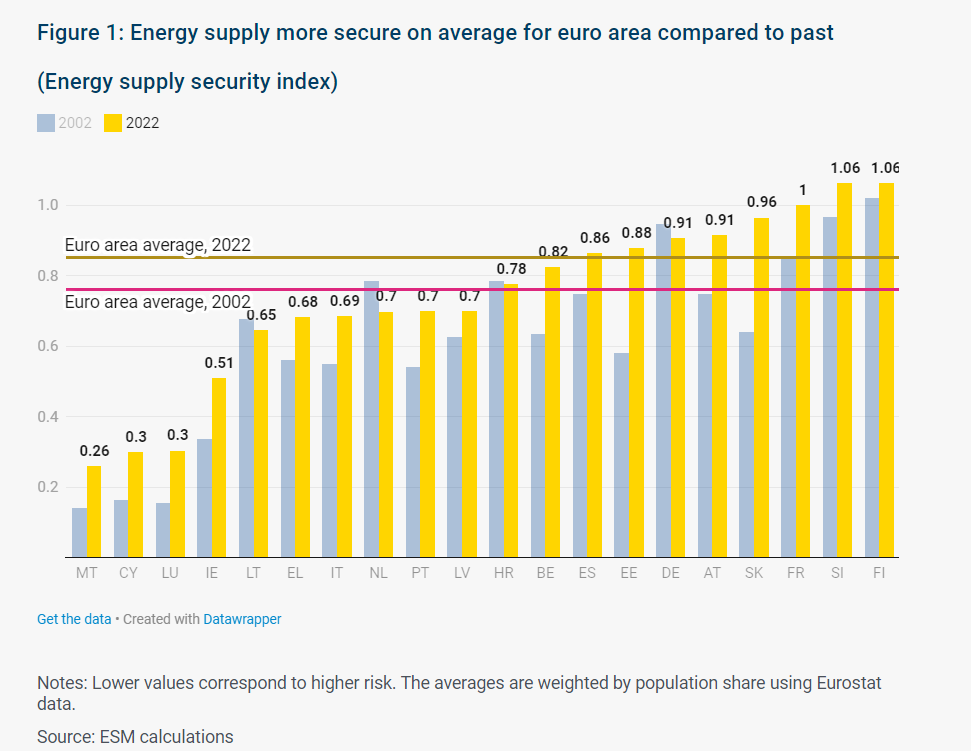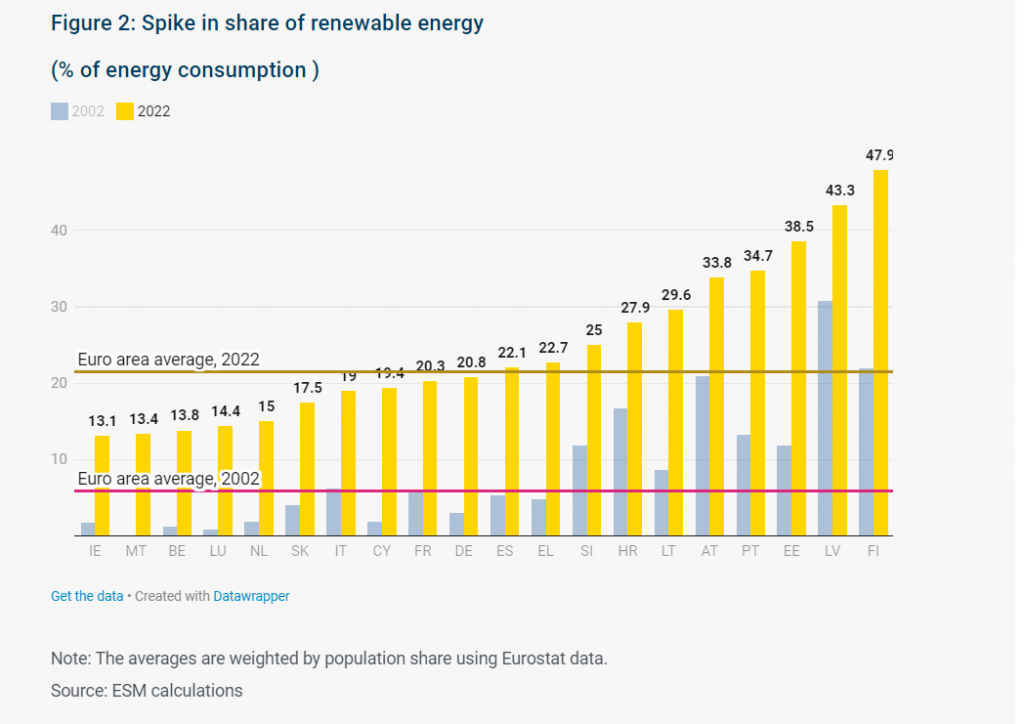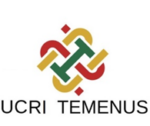Energy security is key for the strategic autonomy and economic resilience of the euro area. Progress made over the last two decades has been curtailed by disruptions to energy markets caused by Russia’s war in Ukraine and severe weather in 2022. Geopolitical developments could hamper it further. To enhance resilience to energy supply shocks, euro area members should continue increasing their use of domestically produced renewable energy, a priority on the European Union (EU) agenda.
What is energy security and why is it so important?
Energy security, the uninterrupted availability of energy sources at an affordable price, is a key determinant of economic resilience. [1] It matters for corporates whose business models rely on stable input prices and for citizens whose wellbeing depends on energy availability at reasonable prices. A country’s energy security depends on how well diversified its energy sources are. Sovereigns relying on a variety of sources such as nuclear, fossil (oil, coal, and natural gas), and renewables (wind, solar and hydropower) can smoothen shocks affecting one input by substituting it with another. In addition, if a country relies on importing energy, political stability in the supplying country is a key determinant of energy security.
Where does the euro area stand?
Energy security has increased in most euro area member states over the last two decades, according to our analysis using the latest data available (see Figure 1). This is also true, on average, for the euro area as a whole. This is reflected in the scores for the region on our energy supply security index,[2] which takes the various diversification factors into account, especially renewable energy sources. Our study shows that an increased reliance on renewable sources and nuclear energy reduced some countries’ dependence on fossil fuels and imported energy, ultimately improving energy security.[3] Among others, energy security has deteriorated in the Netherlands, due to the phasing out of domestic gas production, and in Germany, after a decrease in nuclear energy production and more concentrated energy imports through the Nord Stream gas pipeline.

The use of imported fossil fuels remains high among euro area members, accounting for more than 70% of total energy consumption on average. Reliance on exports from countries with elevated political risk weighs on the energy supply security index scores of some countries, despite their well-diversified energy mixes.[4] Constraining energy supply can be used by authoritarian states as a foreign policy retaliation tool, as demonstrated by Algeria when, in 2022, it withdrew from its long-lasting gas export agreement with Spain in response to the country’s support for the Moroccan autonomy plan for Western Sahara. The crises at the Panama and Suez Canals, as well as the conflict in the Middle East could lead to further supply shocks and price volatility.
2022 – a defining year for euro area’s energy security
2022 was exceptional for the energy market. Russia’s war in Ukraine and extreme temperature fluctuations increased energy prices and their volatility, placing an additional burden on consumers and businesses. As a result, energy security, as measured by the index score, deteriorated in more than half of the euro area countries. The largest drop in energy security was due to gas supply disruptions and a significant reduction in hydropower production. Still, some euro area countries strengthened their energy security in response to worsening global energy trends by increasing their share of renewable sources and significantly reducing their reliance on energy supplies from Russia. For example, in 2022, Finland used by far the highest share of renewable sources, while Luxembourg recorded the largest relative increase in its renewable energy consumption in the euro area, which alleviated the negative consequences of the war-induced energy crisis (see Figure 2).

EU policies support energy security goals
The energy supply security index scores show that countries with broadly diversified energy mixes and a high share of locally produced energy have the highest level of energy security in the euro area. Longer-term energy security can be achieved by replacing imported fossil fuels with renewable energy and by improving energy efficiency. Decarbonised and broadly independent energy systems will reduce energy costs in the long term and make Europe more resilient to future geopolitical crises. The share of renewable energy sources in euro area consumption reached an average of 25% in 2022. This indicates that the transition from imported, high-emission energy sources is far from complete. Efforts must continue.
Various EU policies, such as the new Renewable Energy Directive[5] adopted in autumn 2023, set more ambitious targets aimed at further improving energy security. This directive requires at least 42.5% of EU energy to be renewable by 2030, in line the Green Deal and REPowerEU initiatives. [6] There is still a long way to go to reach this goal and ultimately achieve strategic and sustainable economic resilience.
Acknowledgements
The authors would like to thank Nicola Giammarioli for the valuable discussions and contributions to this blog post, and Raquel Calero for the editorial review.
Further reading
International Energy Agency (2023), Energy security.
Kaufmann, D., Aart, K.and Massimo, M. (2010), The worldwide governance indicators, methodology and analytical issues.
Jaden, K., Augustus J P., Gregor S. (2024), Energy security and the green transition.
Footnotes
[1] See International Energy Agency (2023) for the definition of “energy security”.
[2] We compute the energy supply security index using data on i) diversification of energy sources in the overall energy supply; ii) diversification of imports by energy source and region; iii) a political stability factor. This methodology is based on the Shannon-Wiener Diversity Index aggregate indicator. See also Jansen, J.C., van Arkel, W.G., & Boots, M.G (2004), Designing indicators of long-term energy supply security.
[3] While a higher use of nuclear energy and renewables increases the diversification of energy sources according to our methodology, it is acknowledged that these sources depend on the availability of uranium and certain metals with geographically concentrated production. Adolfsen et al. (2024), The geopolitics of green minerals.
[4] The political risk component of the energy supply security index is computed based on the World Bank’s Political Stability and Absence of Violence/Terrorism indicator (Kaufmann et al., 2010).
[5] European Parliament and Council, (2023) Renewable Energy Directive.
[6] The European Commission (2004), The European Green Deal. Priorities 2019-2024.
